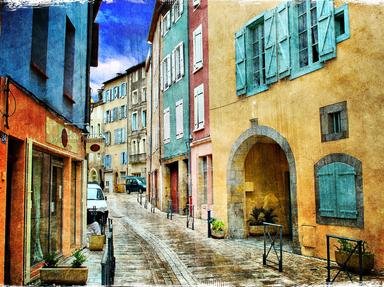Quiz Answer Key and Fun Facts
1. Perhaps one of the most intriguing things found in the cave paintings in La grotte Chauvet in Ardeche,France from 20,000 to 17,000 years ago was the depiction of which animal?
2. Statuary depicting this animal belongs to the legend of the creation of Rome, which animal is depicted? Hint, it is caring for the twins Romulus and Remus.
3. Which of the following animals are depicted in the mosaics of the palace of Knossos in Crete from 1450 BC?
4. Which French 19th-Century artist known for animal paintings and in particular, horses, required and possessed a special permit to attend equestrian events?
5. Which of the following paintings contains a rather well talked about monkey?
6. The animal symbolic of St. Mark in art is the lion or winged lion, what other saint is depicted with a lion most often? (Hint, often in the desert too.)
7. Which of these painters did a self-portrait with a monkey?
8. Which member of the Blaue Reiter (or Blue Rider) movement painted more horses, in vibrant colours like blue, or orangish red?
9. A very famous tapestry now in the Musée de Cluny, Paris was made in the 15th century depicting a Lady and which central animal figure?
10. Gustave Courbet (1819-1877) often scandalized his contemporaries with his portrayal of everyday scenes rather than airbrushed type depictions of mythological themes. In his "Burial at Ornans" what animal in attendance drew attention?
11. Which of the following painters did NOT do a painting of a woman with a parrot?
12. Which two sorts of animals appear in the foreground of the wintry scenery in the snowy landscape of "Hunters in the Snow" by Pieter Brueghel (1565)?
13. In the Romantic painter Eugène Delacroix' "Death of Sardanapulus" (Louvre, 1828), the monarch is reclining on his bed as everything in his palace is destroyed or killed before his eyes, and then the palace is to be set on fire, what animal portrayal adds to the horror of the interior scene?
14. The painter Henri Matisse did this bright motif several times; one of the most famous ones is from 1912, with the depiction of a sculpture as well. Though it's often called a still-life in some of the literature, or a "nature morte", the presence of these creatures makes it not quite as still as all that. What sort of creature did Matisse put in this painting?
15. In the famous "Las Meninas" painting of the Infanta of Spain and her courtiers from 1656, Diego Velasquez included an animal in the foreground who looks very unconcerned with the intricate "gazes" volleying around between spectators, painter and subjects. What is this animal?
16. Which animal's posterior is featured in chiaroscuro in Caravaggio's portrayal of the "Conversion of St. Paul"?
17. In Manet's painting "Olympia" from 1863 which was exhibited to great public consternation in 1865 at the Salon, which animal is at the foot of the reclining nude subject and standing figure that attracted critical derision and even ridicule?
18. This artist did one of the most beautiful portrayals of a rabbit or hare known to us in Renaissance times as well as squirrels and other animals. (Not to mention many self-portraits.) Who was our hare engraver?
19. What is the animal most often depicted in the Byzantine mosaics of Ravenna?
20. Which of the following painters frequently depicted a reddish dog?
Source: Author
Bruyere
This quiz was reviewed by FunTrivia editor
fringe before going online.
Any errors found in FunTrivia content are routinely corrected through our feedback system.

